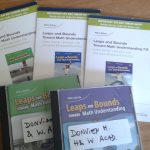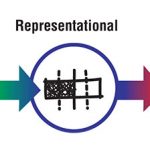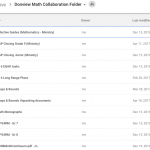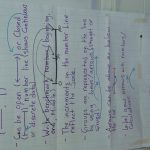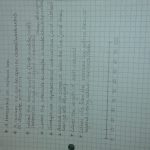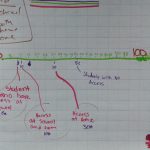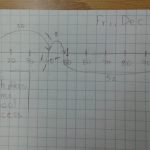Teachers will work with the Learning Centre math coach to refine and share best practices in mathematics that support all students with special education needs. Based on school data (EQAO mathematics scores, observations within the math classroom, an appropriate math diagnostic task and IEP accommodations/modifications), teachers will target math concepts, math strategies, teaching strategies, math tools, math manipulatives and high-yield strategies to refine and explore best practices.
Team Members
Leonora Rochwerger
Toronto District School Board
Geoff Onderdonk
Toronto District School Board
Jared Baker
Toronto District School Board
Robin Lewis
Toronto District School Board
Professional Learning Goals
- Learned how to collect and use data more effectively to identify needs and plan next steps
- Created common, easily accessible spaces for sharing and collaboration
- Collaborated as a team more regularly around best practices and professional growth
- Shared learning with whole school as we transitioned to an embedded special education model
Activities and Resources
- Learned how to disaggregate EQAO results based (special education versus full school versus gifted program) to identify learning gaps by specialty programs within school
- Triangulate data with classroom observations and reporting data
- Shared diagnostic tasks and support resources
- Learned about Leaps & Bounds (as a diagnostic task and/or intervention tasks)
- Unpacked Leaps & Bounds diagnostic tasks to look for learning trajectories of math concepts
- Collaborate in teams to share best practices (specific for students with special education needs)
- Refine teaching practice
- Continue to deepen understanding of transitions from concrete, representation, abstract (gap closing and learning trajectories)
- Researched (CRA approach – Singapore math) to build understanding of student learning from concrete to representational (pictorial) to abstract
- Researched how CRA approach is found in math curriculum and Leaps & Bounds resource
- Continue to deepen understanding of manipulatives to tools to algorithms (gap closing)
- Completed various diagnostic tests in class with students and tried intervention/teacher lesson plans
- Co-teaching in class with Learning Centre math coach
- Build commonalities between classrooms (diagnostics and high-yield strategies)
- Personal reflection and goal-setting (continuously) to determine needs and next steps
Unexpected Challenges
During this project, we had many challenges. Both of our grant participants had a change in members due to various reasons that included:
- Teachers leaving school on sick leave
- Teachers taking on alternate leadership opportunities (RMS lead teachers)
- Clarification or flushing out of goals for each team
We also struggled with the following:
- Difficulty getting supply teachers for special education classes and within a middle school environment
- Changes in messaging from director/board about timeline for integration of HSP and special education students into regular streamed classes/programs
- Transient classroom populations that made progress slower than expected or less consistent
Enhancing Student Learning and Development
- Students in the special education program have an increased confidence in mathematics and their ability to choose an entry point into the question while problem-solving (supported through math manipulatives and math tools)
- Students have a deeper understanding of the connection between math manipulatives/tools/algorithms
- Students have common high-yield strategies being utilized within their classroom to support individualized learning and progress
Sharing
- All work is being shared with staff electronically (via Google Drive)
- All new math grade teams will meet in June to review the outcomes of the professional learning project and share next steps for implementation
- School-wide plan is being developed on how to continue to implement a school-wide consistent diagnostic task (per grade and trajectory through school)
- Additional resources are being purchased as requested by teachers to meet their learning needs (as we share the project)
- Professional learning process and outcomes have been shared with the superintendent on an ongoing basis (she has shared progress with other schools in the Learning Centre in hopes to spark other inquiry projects). Next steps will also be shared with the superintendent.
Project Evaluation
Our project was definitely a success as we all had many new learning opportunities and time to participate in professional discourse. We all took risks, learned from each other and tried something new in our programs to support student achievement. We are still in the early stages of implementing the Leaps & Bounds diagnostics and supporting tasks, however, we are excited to continue exploring best practices for implementation during the next school year.
Things we might have done differently would be starting earlier in the year. Having the time in June to prepare for September and all of first term will definitely help get us on the right track and feel prepared to jump into programming math units that are responsive, targeted and meet the individual needs of our students.
Personal Team Member Reflections:
Team Member 1 – The personal success I had during the project included: “… having the learning coach come to the class to clearly show us step-by-step how to establish success criteria with the students (through co-teaching). After she showed it, I did it with other topics and students used this when they prepared for their tests – it was neat to see how many of them incorporated this in the answers (i.e., students many times forget to convert units when a problem has different units – we included this in the success criteria for solving problems – and almost everybody did this right in our last test). Moreover, I had lost my copy, and when I went around asking for a copy, most of them had it in their binders easy to access!
I found the last meeting very helpful as well – when we “unpacked” the Leaps and Bounds diagnostics. I had been using Leaps and Bounds before, but I was able to understand better the specific correlations with the different grade curriculum expectations. The only challenge with this is how long it takes to do it – I guess the good thing is that once it’s done, it’s done (hoping they won’t change the curriculum for a while).”
Team Member 2 – The personal success I had during the project included: “For me, it was all about having another resource to use for kids with increasingly diverse needs. More to the point, having a resource that was designed for these types of kids. It allows for simple and reliable diagnostics that leads you directly into a targeted (more or less) pathway for type of learner you have before you. In short, I appreciate the flexibility that the program allows me as I work with my kids.
As far as the collaborative element, it was nice to be able to share stories and best practices and experiences with the program with other similarly minded colleagues.”
Team Member 3 – The personal success I had during the project included: “Leaps and Bounds has been a great resource for both myself and my students. For the most part, they find the language in the tasks easy to understand. I like how simple it is to access all of the resources (diagnostics, pathways, task handouts) from the various grade levels, which aids me with differentiated instruction. I also appreciate how easy it is to edit/change the activities so that I can use them more than once.”
Resources Used
Curriculum correlation charts (Nelson – Leaps & Bounds)
Leaps & Bounds Teacher and Student resource – Nelson (hard copy and electronic versions)
Google Drive (GAFE applications)
Information about CRA approach (concrete/representation/abstract)
Information about CRA approach (concrete/representation/abstract)
http://www.broward.k12.fl.us/studentsupport/ese/PDF/CRAApproachinMath.pdf
Learning Centre Math Coach
Resources Created
These resources will open in your browser in a new tab, or be downloaded to your computer.



